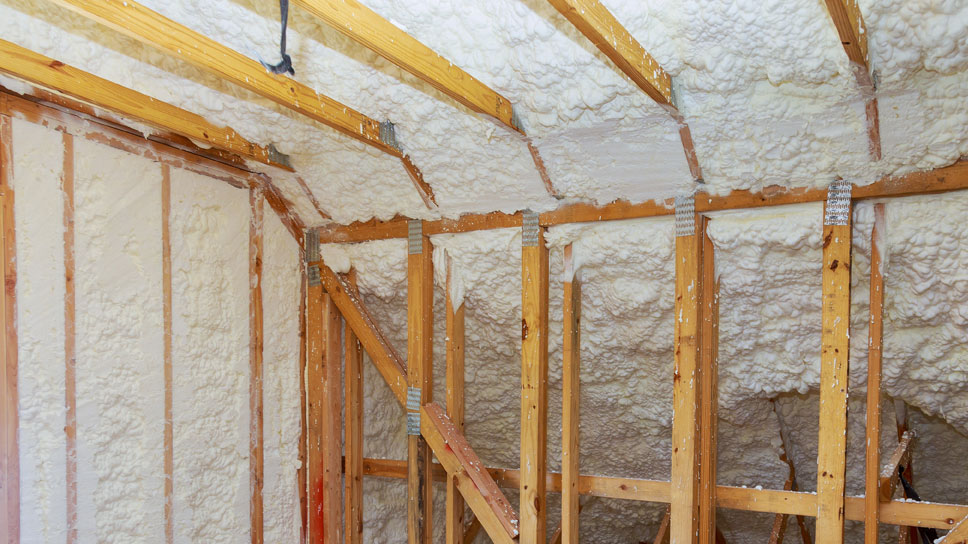Indispensable insulation
Every residential building is subject to certain physical phenomena. Over time, its external appearance, its strength parameters or its general level of usability and ergonomics change. Its energy efficiency curve also changes. If it falls too low, then the house needs to be insulated immediately.
In many cases, poor thermal insulation is not only caused by aging bricks, but also by incorrectly installed insulation at an early step of the construction or, quite simply, by construction errors (e.g. poorly laid or wet insulation material, wet walls or dampness between the wall and the insulation). Inadequate or no thermal insulation in the house results in the loss of up to 40% of the energy needed to maintain the required temperature of the living interior.
Rumours and Myths
At the outset, let us clarify an issue once and for all. Contrary to common belief, PUR foam is safe for health, and independent research additionally confirms that its insulating layer prevents the growth of mould and mildew in living spaces. Furthermore, open-cell polyurethane foam is breathable and safe for wooden structures. Any possible problems with the timber framing of a building most often result from inadequate drying or construction defects of these elements.
PUR foams generally have a reaction to fire class E, but are self-extinguishing. Expanded polystyrene features the same fire performance. Mineral wool is non-flammable (class A1 or A2). Application and subsequent use of the PUR spray insulation layer is therefore entirely safe.
Two types of PUR
Insulation of a house with PUR spray method is carried out by continuous mechanical spreading of the insulation layer on a given surface, avoiding technological gaps and joints of the material. Two types of PUR foam are used for thermal insulation.
- The first one is closed-cell foam (e.g. Purios H). It consists of small closed cavities and its properties are similar to those of XPS polystyrene. This type of foam is most often used for thermal insulation of foundations, walls and flat roofs. Closed-cell foam is not vapour-permeable but at the same time it has very good resistance to water. Its weight is 30 - 55 kg/m3.
- The second type of foam is open-cell foam (e.g. Purios E), the structure of which resembles a normal sponge. This type of insulation material is characterised by high flexibility, which makes it perfect for thermal insulation in wooden structures, attics or frame fillings. It weighs between 9 and 12 kg/m3 (mineral wool weighs between 20 and 80 kg/m3).
Why PUR foam insulation?
Re-insulation with PUR foam allows to obtain a uniform insulation layer, eliminate air bridges, ensures very good tightness of the covered surface (liquid foam expands after application, filling precisely all places), does not lose its insulating properties with time, effectively protects the building against heat loss in winter, and protects it against excessive insolation in summer.
Application speed and efficiency
Re-insulating a building with PUR foam is currently one of the best insulation methods, which allows for insulating many elements, starting from foundations, up to attic and roof elements. First of all, it is a very quick method to perform, which does not require unnecessary ground preparation or specialist protection in this respect. Insulation of a building with PUR foam is a guarantee of long and reliable functionality, and first of all - correct energy efficiency of the entire house.

 This website uses cookies. By using this website, you consent to the use of cookies in accordance with your browser settings.
This website uses cookies. By using this website, you consent to the use of cookies in accordance with your browser settings.